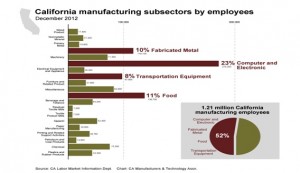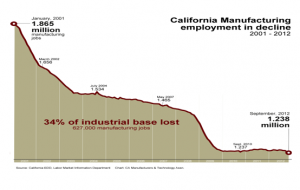This year’s invention contest held on October 11, 2018 by the San Diego Inventors Forum was incredible. I’ve been attending the contests for nine years, and this year, there were so many unique, useful inventions that it was very difficult to vote for my favorite invention.
The mission of the San Diego Inventors Forum is to help inventors to become entrepreneurs to create new companies and jobs here in San Diego. Monthly meetings have been held on the 2nd Thursday of each month. Meetings are held at AMN Healthcare, 12400 High Bluff Drive, San Diego, CA 92130.The next meeting will be this Thursday, November 8, 2018. Networking starts at 6:30 pm, and the meeting starts at 7:00 pm.
At the monthly meetings, inventors meet other successful, local inventors in many different fields and learn how they developed their marketable products. The give inventors the opportunity to network with fellow creative people and get guidance and encouragement to take their first or next steps necessary to turn their ideas into a reality.
At the beginning of each meeting, new attendees are able to introduce themselves and ask financing, business, licensing, marketing, legal and engineering questions. They can present their ideas to private individuals or for focus group review. They also get to ask for particular resources they are looking for so their needs can be matched. During the “Who Needs Who?” portion of the meeting, service providers can personally introduce their services.
Inventors can pay $100 for a one-year membership or pay $10 for each meeting they attend. During the course of the year, program topics cover everything subject you need to know from capturing the concept to getting investors to marketing your product.
The 2018 contestants were:
- Andrew Bataller, iPad Case
- Gerry Klassen, New Painting Tool
- Phillip Perez for his Impact Tool shovel
- Eric Robinson for his Green Launch orbital launch service
- Michael Rodgers, The One-Handed Hamper
- Dave Schmoyer, Pill or Parts Pal
- Scott Swaaley, MAKESafe Power Tool Brake
- Greg Wawrzyniak, Super Dooper Cord Looper
- Chris Wzysoczanski, T-Shots – Disposable Reactive Target
- Ruth Young-Loaeza for her hybrid sheet collection
The First Prize of $1000 was won by Phillip Perez for his Impact Tool shovel. Second place was Ruth Young-Loaeza for her hybrid sheet collection, and third place was Eric Robinson for his Green Launch orbital launch service.
At the end of the meeting, SDIF Chairman Adrian Pelkus said “good-bye” to attendees after 13 years of leading the group. He said, “I’ve been privileged to meet hundreds of my fellow inventors over the years and mentored so many here in San Diego. I’ve been delighted to see many of your ideas get to market and honored to have assisted some of you along the way. I am indeed sad to leave the local community. My plans are to accomplish a lot more for mankind and the environment by working on my large backlog of such projects.
I am especially proud to have play a part in bringing together over 40 inventor clubs around the county into the newly formed organization of inventor club leaders and to have been part of our first meeting with Andrei Iancu, the new director of the USPTO, and participate in meetings with Congressional Representatives in Washington, D. C. to educate them about how the America Invents Act and PTABs are hurting inventors.”
He added, “Thanks to my dear friends that helped me keep SDIF going all these years. Especial thanks to long-time supporters and fellow board members: Leslie Wagner, David Waller, Sidney Wildesmith, Ben Gage, Judith Balian, Jennifer Joe, and Michele Nash-Hoff.”
Several of the above, including me, gave heartfelt testimonials to Adrian for his brilliant leadership of the group for these many years and wished him continued success with his own inventions.
Adrian announced that he was also dropping off the board of directors for U. S. Inventors and the United Inventors of America, but he urged everyone to continue to support patent reform. He reminded everyone that we need strong intellectual property laws to defend their innovations. He said, “The patent laws have become so weak that the independent inventor can no longer count on an issued patent to protect his right to profit from the labors of their mind. This strikes at the heart of what our founding fathers knew was the way to make the country great and made a foundation Article in the US constitution. We American Independent Inventors must stand and demand our rights be restored. Our nation needs us to create the new ideas and subsequent new jobs to continue to grow and thrive. The present patent laws must be revised to bring back the confidence a patent brings to both the inventor and investor.”
He encouraged everyone to see the movie Invalidated: The Shredding of the US Patent System, if they didn’t attend the SDIF viewing in August. The movie raises public awareness of the problems inventors are having with the patent system. (Note: You can also see the documentary on Amazon, free with Amazon Prime subscription, or $2 otherwise.)
In this session of Congress, there have been bills introduced to the House of Representatives and Senate to protect inventors’ patent rights, such as the STRONGER Patents Act 2017 (S. 1390), introduced by Senator Christopher A Coons (D-DE), and the Inventor Protection Act (H. R. 6557), sponsored by Rep. Dana Rohrabacher (R-CA). The most comprehensive BILL is the Restoring American Leadership in Innovation Act of 2018 (H.R. 6264)introduced by Congressman Thomas Massie (R-KY), an award-winning inventor and successful entrepreneur himself. It is co-sponsored by Congresswoman Marcy Kaptur (D-OH) and Congressman Dana Rohrabacher (R-CA). Its goal is to roll back some of the “worst parts” of the America Invents Act of 2011 and reverts patents back to first to invent, not the first inventor to file. All three bills are stuck in the Judiciary Committee.
I encourage you to contact your Congressional Representative to urge them to become a co-sponsor of one or all of the bills mentioned above. These bills must not languish in committee for the rest of this session. We must pass legislation to restore our once great American patent system that was the envy of the world. Right now, inventors in China have more protection for their patents than inventors in the U.S. We cannot let China become the innovation leader of the world.
.

